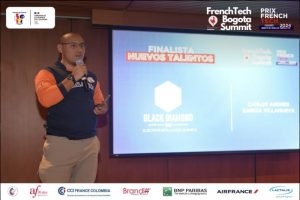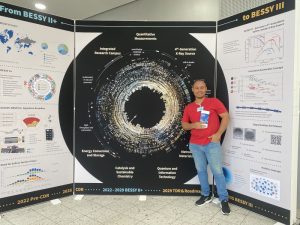
By summerstudent Carlos Garcia Villanueva >
As someone who grew up in the outskirt in Barranquilla metropolitan area, also known as the birthplace of Shakira, I was exposed to living in an unequal society, even though I was a privileged kid. My interest for science was what drove me to choose chemistry as a career path, particulary influenced by a common situation, which was the accumulation of trash. Since I was kid I asked myself: Why trash does not seem to go away? Why the accumulation of waste in my neighborhood was more a feature of the landscape, than an anomaly? This was a question that always bothered me.
I entered university, I progressed through my subjects, until one day the husband of a close cousin said to me during a family gathering: “Hey Carlos, do you study chemistry right? So what is graphene?” I was intrigued – I asked how he knew about that material, knowing that he was familiar with mineral extraction due to his background as a mine worker. I was amazed by his knowledge of such a specific material, which had only been discovered 14 years ago, by the time we were having that conversation in December 2023. He told me about a request from a buyer from Panama, then changed subjects, and proceeded to questions about other minerals that could be buried in a terrain he had planned to mine.
Graphite, graphene and waste as resource
That day, I could not sleep and opened my computer. I started reading about graphene in scientific papers and discovered there was a graphite shortage crisis, which was caused by the rise in demand for lithium-ion batteries. Graphite, a natural type of carbon is used for the construction of the anode within the battery. I then read about how organic waste, plastics, biomass and bituminous coal can be chemically converted into synthetic graphite, useful for graphene synthesis. By encountering this information, I was reminded about the moment I chose chemistry: how this decision was tied to my experience, growing up surrounded by waste – waste that could be a useful resource. In addition, it dawned on me how the mass production of a variety of items using synthetic polymers has increased constantly and sadly how all this waste might have accumulated where I grew up.
From a proposal to a start-up

I came up with an idea, prompting me to draft a proposal for the ministry of science in Colombia. Now I run a start-up, where I create a new prototype for graphite exfoliation. This is the cheapest way to mass produce graphene, to fulfill the increased demand of graphene and graphite. The project has opened doors at the French embassy, granted the acknowledgement of the western union foundation, and got me an investor.
The fact that I have an ongoing start-up venture in Colombia about graphene was nteresting to everybody here. The surprise was even higher when I told them that I was producing graphene through electrochemical exfoliation of graphite. This requires the usage of oxygen gas bubbles that expand the graphite mineral, which in itself can be produced by using a pyrolytic furnace
It was clear to me that I have discovered an innovative, financially feasible idea and an alternative for the usage of organic waste, different from a biogas energy plant, a more common approach among waste management facilities in Colombia. At the same time, I was amazed by the fact that I was doing electrochemical research at a renowned institution, in addition, I was arranging meetings with the Saudi Arabian embassy. The experience was surreal, because I had the opportunity to interact with experts in the field, an experience as few Colombian students might have the opportunity.
Regarding my start up project, my aim is to lower the price of graphene from 200 US$ per kg to 175 US$. This will contribute to the affordability of renewable technologies, like the blades of wind turbines, graphene anodes, composites and so on.
2D materials from trash: Not a fairy tale

Sometimes I wonder how I got here: If someone had ever told me I was going to do research that involves 2d materials and using trash to create minerals I would have said to that person, it is all fantasy. I realize that my life has been full of surprises, turns and unexpected events. Maybe it is like a Grimm brother’s tale with a lucky ending: A Colombian student from the economically unequal Caribbean region, which is not famous for prestigious universities, has founded his own start-up to produce a valuable substance using waste, thus helping his neighborhood and improving the quality of life. Even when I now did find out that the original Grimm brother’s tales are often a bit scary, I believe in the happy ending and that tales can come to life.
About the author: Carlos Andres Garcia Villanueva takes part in the ISSP2025 at HZB and works in the team of Prof. Marcus Bär, supervised by postdoc Perla Melendez. He is working on the synthesis of catalysts, using a 2D material like graphene, called boroncarbonitride as a support for metallic nanoparticles. It can speed up chemical reactions within a methanol fuell cell, which is converts methanol into CO2 and H2O while producing electricity.
